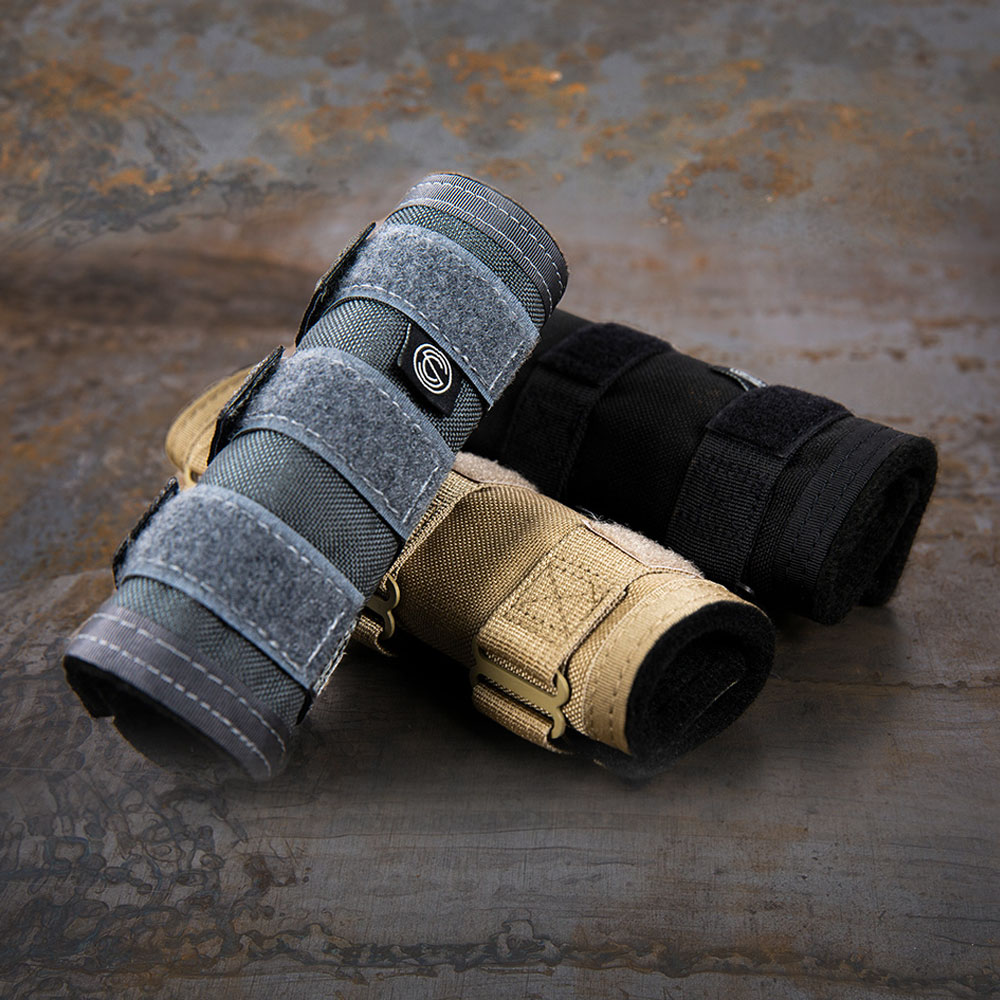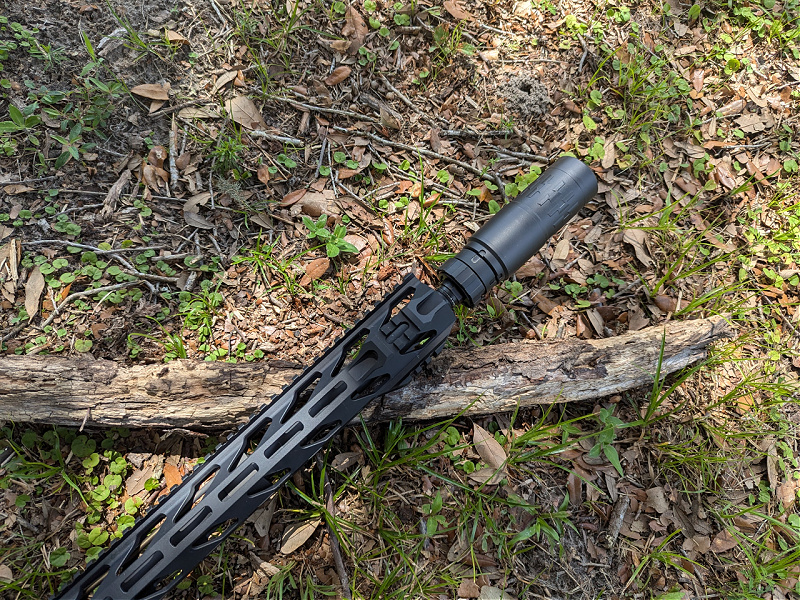5 Things I Learned With My First Suppressor
Travis Pike
I wouldn’t call myself an expert, but I do love to learn. Some things you can pick up from books and manuals, but other times, you need good old-fashioned hands-on experience to really get it.
Before owning a suppressor, my experience with them was pretty limited. Recently, though, I’ve been spending time shooting with the SilencerCo Velos LBP, and it’s been a real eye-opener.
Lessons Learned From My First Suppressor
I shot a ton at trade shows, and in the military, we occasionally had access to suppressed weapons. However, it wasn’t until I got my hands on the Velos LBP that I felt like I’d really learned a thing or two about cans. More than a thing or two, actually. Here are five things I want to share with you.

1. A Suppressor Gets Hot Fast
Guns get hot. Barrels, uppers, and muzzle devices get hot; it makes sense. These parts contain micro explosions propelling small pieces of metal at thousands of feet per second. The advantage is that barrels, upper receivers, and muzzle devices are exposed to air, and they encourage the explosive force of burning gas to escape. Suppressors do not.
Suppressors purposefully slow gas to cool it. The inside of a can isn’t exposed to air, so they retain heat much longer. As a former machine gunner, I’ve seen barrels get scorching hot after hundreds of rounds. With a suppressor, though, it can take as few as 10 rounds—or even less, depending on the caliber—for the can to become untouchably hot.
If you need to remove your suppressor at the range, patience is key—it’ll take time to cool. And be mindful of where you place it after shooting. Dropping it into a soft case can melt the nylon or foam lining in seconds!

2. Your Zero Can Shift
When I got my Velos 556K suppressor, I felt like a kid on Christmas morning. I couldn’t wait to hit the range and try it out! I grabbed one of my favorite rifles, equipped with an LPVO optic zeroed at 50/200 yards, and set up at 100 yards. Lining up my reticle on a small steel target, I pulled the trigger.
I missed. No big deal, I thought—I probably threw the shot. I tried again. Miss. Confused, I aimed at a larger target and fired. This time I hit, but it was low and to the right. After grabbing some paper targets and tweaking my zero, I was back on track. It turned out the Velos 556K shifted my point of impact just enough to matter.
Suppressor weight affects barrel harmonics, which can impact your zero. If you plan to shoot suppressed, always zero your rifle and optic with the suppressor attached. Also, take note of any POI/POA difference for unsuppressed shooting—it’s good to be prepared.

3. Size and Weight Matter
What I love about the Velos 556K is its compact size — just 4.76 inches long. The original Velos measures just under six inches, which might not seem like a big difference, but for me, the Velos 556K is ideal for home defense.
For hunters and target shooters, the extra weight and length might not be a problem if it means a quieter shot. But keep in mind, a heavier rifle can be tougher to hold steady or use for extended periods, like glassing a ridge.
When choosing the Velos 556K, I used a ruler to test how different suppressor lengths would handle on my rifle. It’s a simple trick, and I’d recommend trying it to find the best fit for your needs.

4. Suppressors Do More Than Cut Noise
I expected the Velos 556K to reduce noise, but it delivered even more. Inside the can, multiple baffles capture and slow gas, cooling it while also reducing recoil. These baffles act like a muzzle brake, cutting rearward force and making the rifle easier to control.
The Velos 556K is lightweight, but the added weight at the muzzle helps reduce rise. Less muzzle rise and recoil mean a tamer, more controllable rifle, allowing for faster and more accurate follow-up shots. With the suppressor in place, you’re reducing noise, recoil, and muzzle rise.
With the Velos 556K, I opted for the Charlie flash hider cap. This cap reduces muzzle flash to almost nothing. So add that to the fact it cuts noise, muzzle rise, and recoil.

5. People Love Suppressors
If you take a suppressed rifle to the range, get ready to be the center of attention. The more introverted shooters will just look at the setup, while the chattier guys will want to know all about your suppressor. You’ll get a wide variety of questions—everything from wait times to how well it works. And, of course, someone will inevitably ask about a “class 3 license” (spoiler: it doesn’t exist).
Suppressors tend to draw curiosity, making you popular — whether you want to be or not. People may even assume you’re a suppressor expert. It’s all part of the fun, though, and if you’re fine with a few questions and people occasionally asking to give it a try, then you won’t have any problems.









